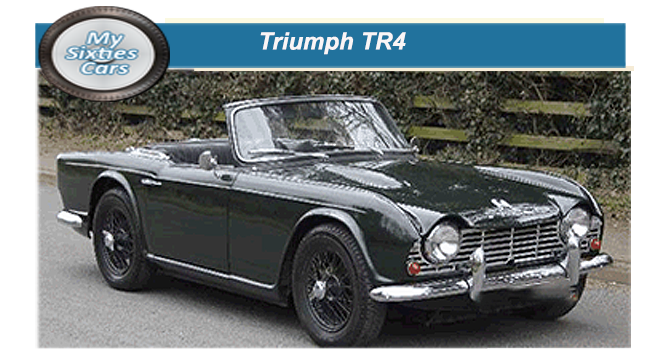 Continuing the tremendous commercial and critical success that the TR2 and TR3 enjoyed during the Fifties was always going to be a challenge for Triumph, although one that they were determined and ready to face.
Continuing the tremendous commercial and critical success that the TR2 and TR3 enjoyed during the Fifties was always going to be a challenge for Triumph, although one that they were determined and ready to face.
Go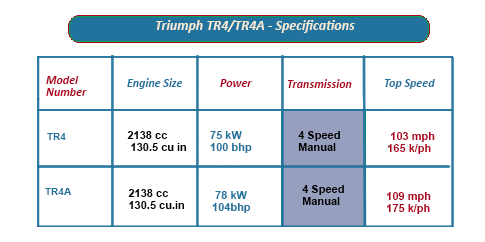 ing into the Sixties, Triumph were either developing or in production of two models that were decade icons- the Herald and the Spitfire.
ing into the Sixties, Triumph were either developing or in production of two models that were decade icons- the Herald and the Spitfire.
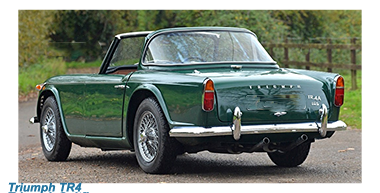 Once again heavily involved in the design and development of both of these models was the talented Italian designer Giovanni Michelotti.
Once again heavily involved in the design and development of both of these models was the talented Italian designer Giovanni Michelotti.
Never ones to change a winning team too quickly, Triumph once again turned to Michelotti to design the TR4.
Michelotti was handed a challenging brief- to design a Sixties-style sports car body which would be an almost exact fit the tried and tested chassis and mechanical elements used on the TR3.
The only significant differences between the two were that the TR4 had a four-inch wider track, both front and rear, and was fitted with rack-and-pinion steering.
As had become almost a foregone conclusion, Michelotti produced a solid design style that complemented the Spitfire, while had a squarer look than the TR3.
One of the major design changes instituted by Michelotti with the TR4 was to abandon the “Fifties Look” cutaway door design used on the early TRs,
![]()
Not only did this minor alteration give the TR4 a much more modern look, but it allowed for wind-down windows to be introduced, much more user-friendly than the side-curtains that were standard till then.
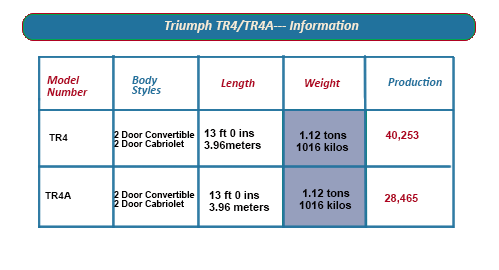 Partially doing away with the spartan trim that was also a feature of the early TRs, the TR4 also came with a boot (trunk) with offered considerably more luggage capacity than most of its sports car counterparts.
Partially doing away with the spartan trim that was also a feature of the early TRs, the TR4 also came with a boot (trunk) with offered considerably more luggage capacity than most of its sports car counterparts.
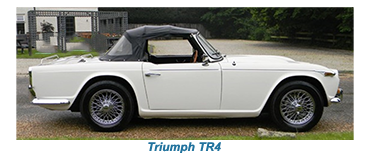 Powered by a 2138 cc. 4-cylinder engine capable of generating 100 bhp the first TR4, produced at Triumph’s plant in Coventry, made its public debut the summer of 1961.
Powered by a 2138 cc. 4-cylinder engine capable of generating 100 bhp the first TR4, produced at Triumph’s plant in Coventry, made its public debut the summer of 1961.
Among the more advanced features found on the TR4 was adjustable fascia ventilation, making for a more comfortable driving experience as well as the possibility to fit a unique hard top consisting of an integral roll bar and a detachable, steel centre panel.
Another option that added an entirely new vista for the TR4 was a rigid roof panel that could readily be folded away and stored for future use.
This vinyl insert and the supporting frame were known as a "Surrey top," although the TR4's entire hard top assembly was often mistakenly referred to by this name.
![]()
The Triumph TR4 remained in production in its original format until January 1965 when replaced by the Triumph TR4A.
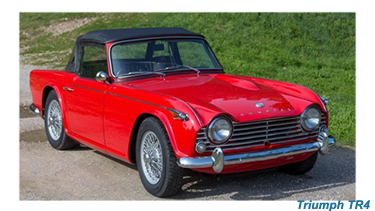 From the outside, the Triumph TR4A was almost identical in appearance to the TR4, with minimal differences such as a slightly revised front grille, fully recessed headlamps, a full-width bonnet, a larger windscreen, a larger cockpit and side flashing indicators.
From the outside, the Triumph TR4A was almost identical in appearance to the TR4, with minimal differences such as a slightly revised front grille, fully recessed headlamps, a full-width bonnet, a larger windscreen, a larger cockpit and side flashing indicators.
By 1967, with the formation of BLMC meaning that imminent and consolidation was on the cards, Triumph decided to do away with the TR4A, replacing it with the almost identical Triumph TR5
The TR4 earned its place in history as the first of the "Michelotti" TRs, with the TR6 the pick of the bunch.






